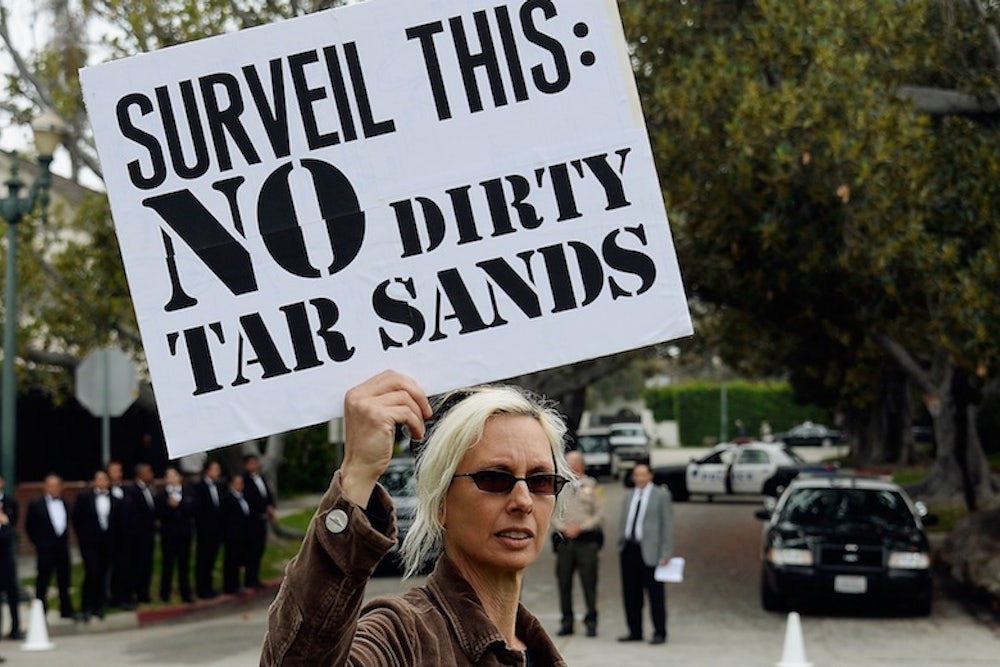Environmentalists have seen this situation before, and they know what to do about it. An oil company wants to profit from Canada’s vast tar sands, so it proposes a new pipeline that will carry the crude oil so it can be refined and exported at the coast. Opponents—residents, environmentalists, and local businesses—must mobilize against it, creating a logistical and legal nightmare for the company. The hope is that the company eventually gives up, because the pipeline becomes too unprofitable a project.
It’s the way environmentalists have fought Keystone XL, which has faced six years of resistance, and three other pipeline proposals that many in the U.S. probably don't even realize exist. On Thursday, TransCanada, the same company behind Keystone XL, decided to make yet another try—this time by filing an application for a new pipeline it's calling Energy East. The pipeline would carry crude oil from Alberta some 2,900 miles to eastern refineries, and some of the oil will be delivered by tankers down to the Gulf Coast. It’s a more expensive option, to be sure, but this effectively eliminates the need for U.S. federal approval.

The environmentalists are gearing up to fight this one, too. Will they succeed?
Energy East would be even bigger than Keystone XL, carrying 1.1 million barrels of oil a day. (Keystone would carry just 700,000). There’s existing natural gas pipeline along most of the route; TransCanada would adapt it, then construct new infrastructure at the ends. Now that it has formally submitted its application, the review process under the Canada’s National Energy Board will take roughly 15 months.
Getting approval from Stephen Harper’s government should be easy enough, given its embrace of the oil industry over action on climate change. But approval from the national government won’t be enough. Just like in the U.S., where Keystone XL awaits approval from Nebraska’s Supreme Court as well as the Obama Administration, the Energy East pipeline would need approval from local governments in Canada. And that won’t be so easy. “Where the pipeline gets stopped is in the provinces themselves,” Adam Scott with Environmental Defence said in a phone interview. Energy East would need to cross six provinces to get the oil to Quebec and New Brunswick, where opponents are already organizing because of the effect they say the pipeline would have on beluga whales in the region. In the past, local organizing stymied plans for Enbridge's Northern Gateway pipeline, by forcing it to meet 200 regulatory requirements. Few expect the pipeline project to continue. The western Kinder Morgan Trans Mountain pipeline, another of the older options, faces firm legal opposition from aboriginal communities.
The fate of Energy East, or any Canadian pipeline for that matter, should matter to Americans—and not simply because emissions and global warming transcend national borders. Keystone XL supporters like to argue it’s worth doing because somebody is going to build a pipeline and the jobs might as well be here. But it’s one thing to propose a pipeline and quite another to get approval for it. The more success environmentalists have in Canada, the easier it will be for American counterparts to prevail in their fight.
